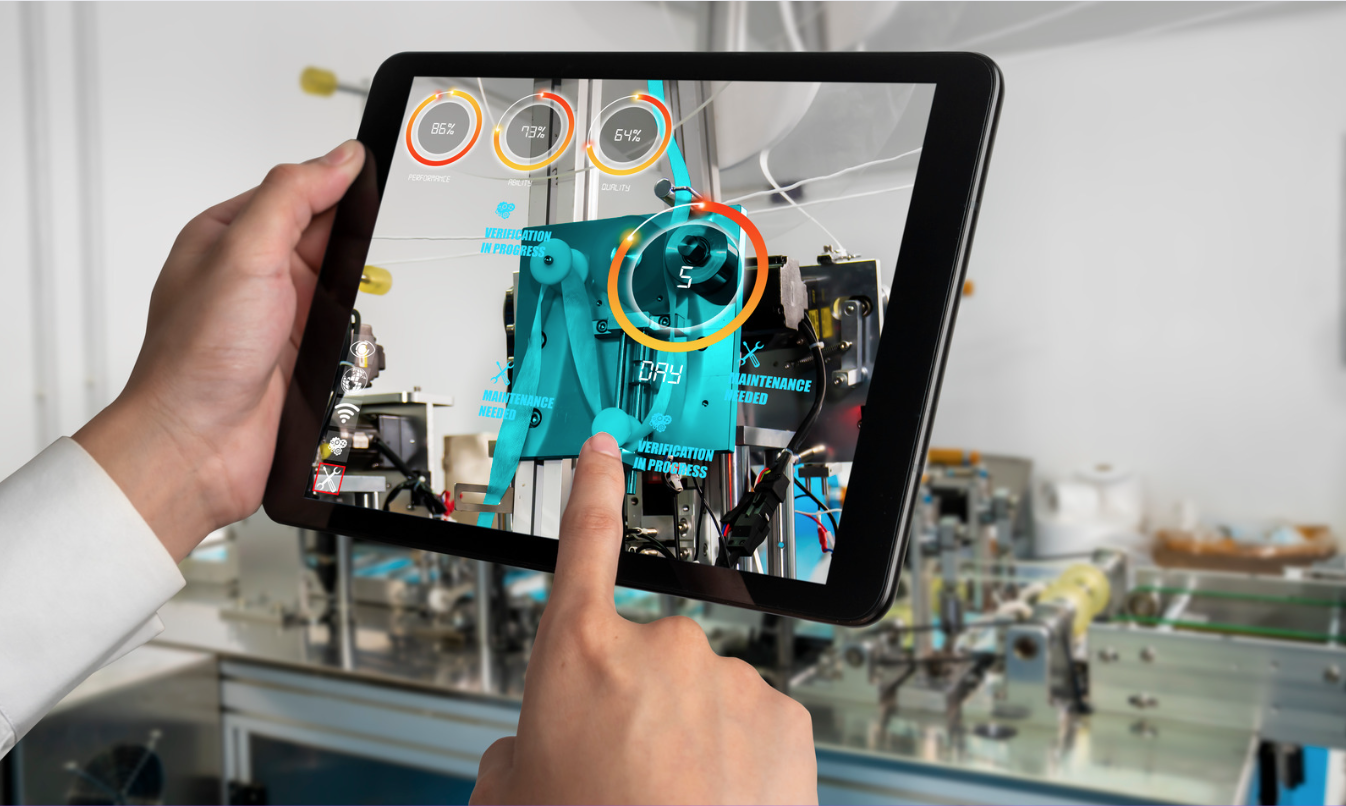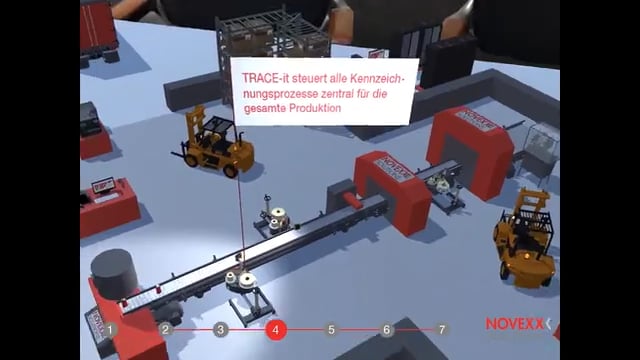Industrial Augmented Reality
How and where AR is shaping Industry 4.0
What is Augmented Reality industrial?
Augmented Reality Industry or Industrial Augmented Reality (IAR) stands for the diverse application possibilities of AR in the industrial environment. This refers to the use of AR to support industrial processes. The keyword? Immersive technologies. By immersively extending our real environment, AR creates completely new possibilities for manufacturing processes, employee training or maintenance work. Processes are displayed in AR and even things that are not directly visible, such as the inner workings of machines, can be experienced up close. In short: We are creating Augmented Reality Industry 4.0.
Contrary to what is often assumed, this kind of industry is not ‘humanless’ and dominated solely by machines or robots. Rather, we are taking advantage of the latest technologies to increase efficiency and place experts in crucial workplaces. This makes it all the more important to create the right user interfaces that transform every employee from a dull executive to a decision-maker. And this is precisely where AR can provide support. Industrial Augmented Reality applications on tablets, smartphones, wearables or even smartwatches are the future here and support both learning processes and the execution of practical tasks – and all of that without any special industrial Augmented Reality software.

Examples needed? Augmented Reality industrial applications:
If you google for IAR nowadays, one of the first hits is “industrial Augmented Reality glasses” or “Hololens industrial Augmented Reality” – and rightly so. Mixed Reality glasses are used to find efficient solutions for challenging tasks in industrial processes. Digital information is simply superimposed on the displays of the wearables, supplementing the environment with virtual assistance, instructions or step-by-step procedures. Best of all, both hands remain free at all times, guaranteeing an unrestricted workflow. So you could now rename the whole thing the “Mixed Reality industry” but that wouldn’t be thoroughly correct either. Because even without the glasses of the future, it is AR itself that upgrades whole industries with innovative industrial Augmented Reality software. What’s the difference between AR and MR? Read more here.
Augmented Reality industrial Trainings, Maintenance & Repair
Basically, the application area and enterprise function of AR in industry is not limited. One of the best-known areas of application for AR in industry is step-by-step AR training. As the name suggests, a process is visualized virtually step by step for new and old employees depending on each use case. The handling of a machine, for example, is not practiced on the real object, but on the digital counterpart, which corresponds 1:1 to its real image – a digital twin, so to speak. AR training thus creates a space where mistakes are allowed and should happen. The learning process is optimized without costly complications during the production phase. AR training becomes all the more important when it comes to maintenance and repair. Let’s take a look at the world of the Industrial Augmented Reality companies:
The Bosch Group, for example, also known as a major automotive supplier and manufacturer of industrial technology, offers Augmented Reality solutions to support companies in various stages of the value chain: from manufacturing to service and repair to Augmented Reality industrial maintenance. With the integration of an AR component, not only the life of the employees becomes easier, but even a view into the inner workings of the car is possible. The invisible is made visible and supports in places that were previously difficult to support. It is irrelevant whether wearables are worn or simply the smartphone or tablet is pulled out – AR training for the industry helps both in learning new procedures and in the active execution of work processes. According to an analysis by BCG, immersive support through AR can even result in time savings of up to 50%, as problems can be diagnosed more quickly and thus also remedied.
Augmented Reality for the industrial enterprise
But AR also increases speed in the execution of work steps: The aircraft manufacturer Boeing operates in an industrial sector in which errors are not permitted. The highest level of concentration is demanded of the employees at every step. AR not only provides innovative support in terms of error prevention, but also has a permanent place in everyday work:
With the help of Augmented Reality apps, the executing experts can follow the next step in the cabling process live and thus avoid mistakes. The most special feature here is the voice control, which also makes it possible to interact with the Mixed Reality glasses and initiate the next step without much effort. Both hands free, an extension of the field of vision as well as smart voice control – a multisensory spectacle, so to speak.
When visualization is everything
Providing Augmented Reality for industrial applications also means visualizing everything that is possible. Technical inner workings, work steps, but also the processes in the production hall can be relevant and optimized through AR:
Novexx Solutions: Process Visualization by svarmony on Vimeo.
A joint project with Novexx Solutions brought the production hall to life virtually and efficiently illustrates the processes within the factory using AR. The individual production steps become comprehensible and the added value of the new data collection software all the more clear. Each step can now be followed by accurately and understood completely simply watching the virtual overview of the plant.
Once a product has been visualized in AR, it can of course be taken anywhere: At trade shows, to customers, or on the new factory floor to see if a machine will fit – the possibilities for Augmented Reality in industrial applications are endless. They offer advantages not only in the production process, but also later in marketing, onboarding, and so on. Augmented Reality is not only an integral part of Industry 4.0, but the innovator itself, a driving force that is always steering towards the future.

